Did Orca Quietly Make The Safest Wetsuit Ever?
Though it isn’t even technically a tri suit, hi-vis accents, an emergency buoy loop, and a built-in medical ID chip makes the Openwater RS1 SW one of the safest wetsuits we’ve ever tested.
New perk! Get after it with local recommendations just for you. Discover nearby events, routes out your door, and hidden gems when you sign up for the Local Running Drop.
Just the other day I was in a meeting with other gear editors at Outside, and one of the managers joked about how they didn’t think it was possible to do a 2,000-word review about a wetsuit. Hold my beer, I thought.
But it’s true, there’s not always a ton to write about when it comes to wetsuits (or running shoes or wheels or helmets for that matter). Unless you want to read about how “wearing these shoes feels like putting two wildcats on your feet, making your everyday run feel less like exercise and more like recess on a playground”—which is utter nonsense, by the way—it can sometimes feel like utter navel gazing to do an extended review on a piece of gear that’s not super complex or interesting or novel. Hence why we do extended reviews on many, if not all, new bikes, but not that many extended reviews on wetsuits. If we’re writing a lot about stitched-together neoprene, it’s because there’s something really interesting to write about (the crazy-interesting structure on the new Huub Pinnacle, for instance).
So when I dug deep into Orca’s latest wetsuit catalog and veered off the beaten path from their new tri line into their “open water swim” category, I didn’t have high hopes—let alone aspirations for an extended review on anything. But then a suit with a horrible name and a midrange price tag caught my attention—the $420 Openwater RS1 SW.
Section dividerOrca Openwater RS1 SW Review: The Basics
Let’s start with the stuff that makes the RS1 a good wetsuit, but doesn’t really raise any eyebrows. Like other $300ish wetsuits, the RS1 has Yamamoto 39 cell neoprene in slightly varying thicknesses between 2mm (arms, shoulders, neck, lower legs) and 3-4mm (abdominal area, upper legs). It also (inscrutably for an “open-water-not-tri-wetsuit) has “hydrolite” material on the lower legs and wrists to help remove the suit quickly, and it does work quite well—even though, why would you need to remove a suit quickly in an open-water event? The long and short of the neoprene on this suit is that it’s ok.
Now to the good stuff: Safety is the name of the game on the RS1, and individually the safety features are interesting enough, but collectively they’re super notable. We’ll dive into each of the safety features below in more detail, but the highlights include hi-vis arms and legs, a loop/tab woven into the back for a Restube emergency inflatable buoy (which also works fine for a regular inflated safety buoy), a handy key pocket, and…drumroll…a built-in NFC chip that stores your medical and contact information for use in case of an emergency. Let’s dig into each of these cool features below.
Section dividerOrca Openwater RS1 SW Review: The (Super Cool) Safety Features
Hi Viz Arm and Leg Panels – First, the “hydrolite” panels that help you remove the suit quickly are cleverly coated in a fluoro orange fabric. The placement and color on these panels are super intentional—many studies have been done, mostly for cycling and running, that you want to highlight oscillating, unusual things like legs, feet, and arms, not just a bouncing head or a back. You want to look like a person swimming, biking, or running—not a buoy or a street sign. As a side note: It’s shocking how few brands take the time to put hi-viz accents on their suits—anywhere on their suits.
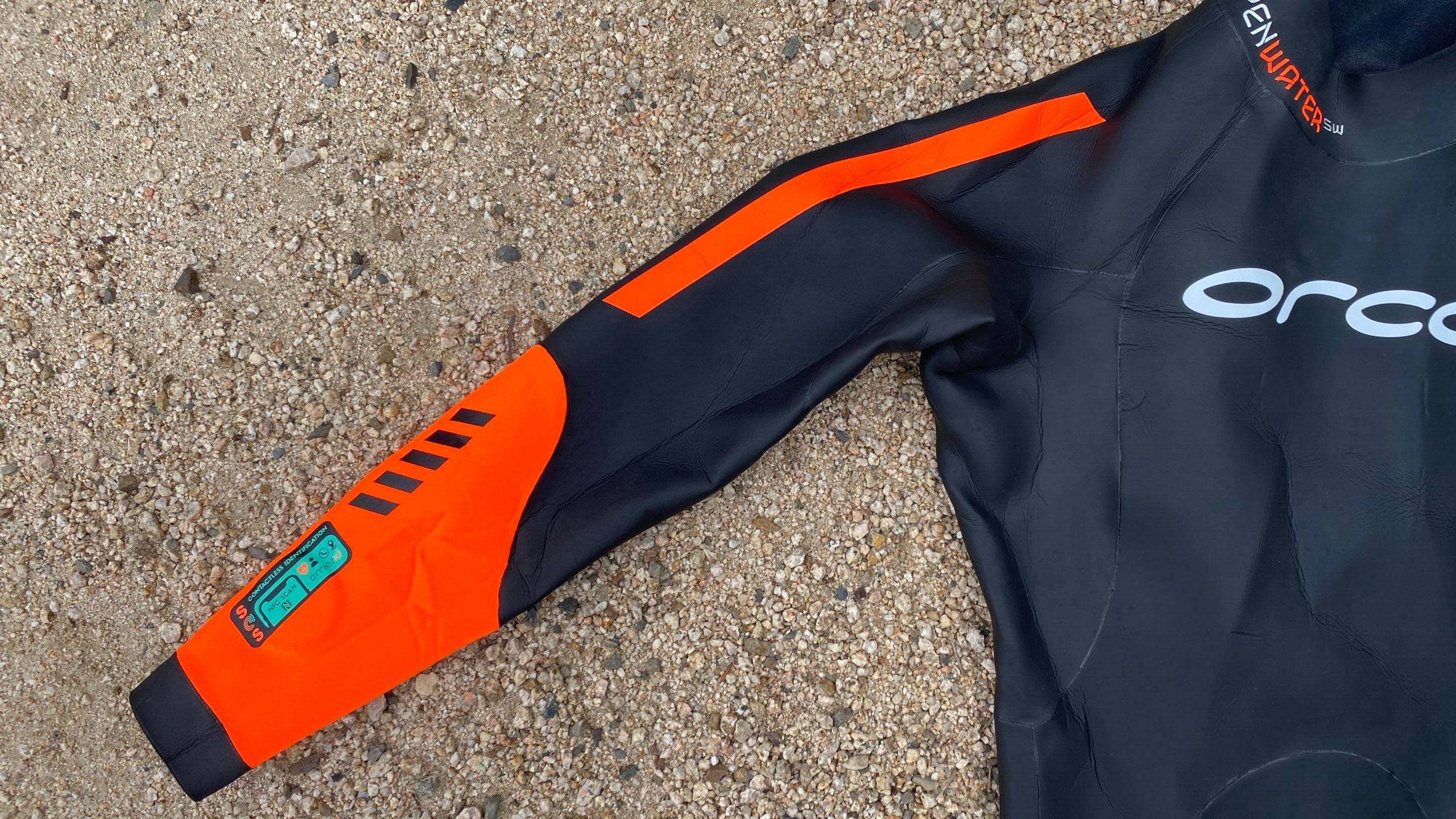
Built-In Buoy Tab – While the buoy tab on the lower back of the suit is designed specifically to be used with a velcro attachment and the Restube emergency safety buoy device (TL;DR: A Restube uses CO2 to quickly inflate when you pull a tab), it can be used with varying degrees of success with any open-water inflated safety buoy. I have always strongly strongly recommended swimming with a safety buoy—especially if you’re swimming alone—and having a loop attachment built in saves you the annoying step of attaching a waist belt and fitting it properly. I would caution that the loop can’t take a ton of stress, so definitely don’t dive under waves with your inflated buoy or expect it to hold if you do a mass start race with it.
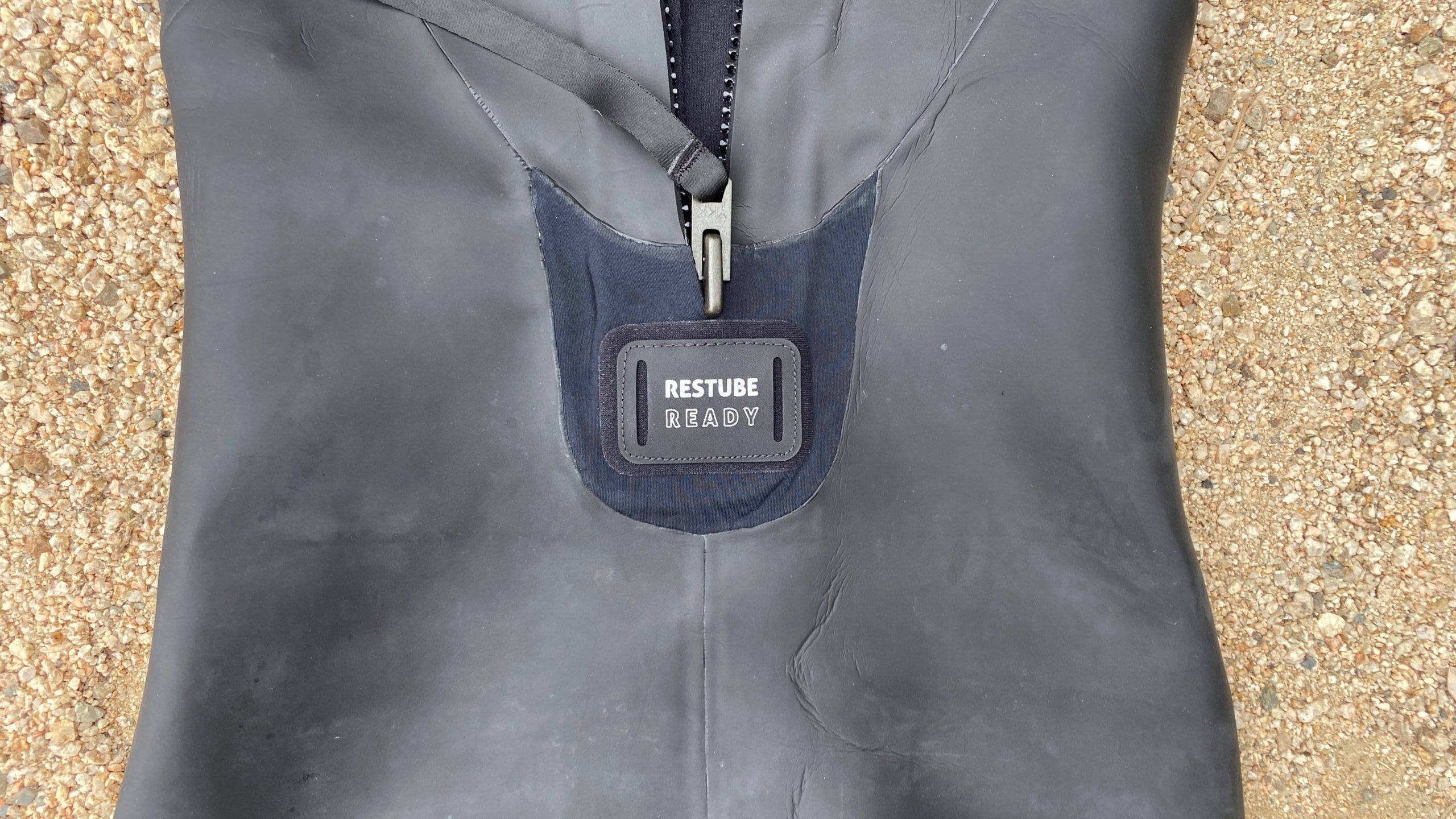
Key Pocket – Ok, this isn’t a big one, but it’s worth mentioning because for some reason many wetsuits don’t come with one. The RS1 has a key pocket located just inside the zipper, but it also has a security loop to ensure you don’t jettison your precious key when you strip off your suit or vent it coming out of the water. Simple detail, but super helpful.
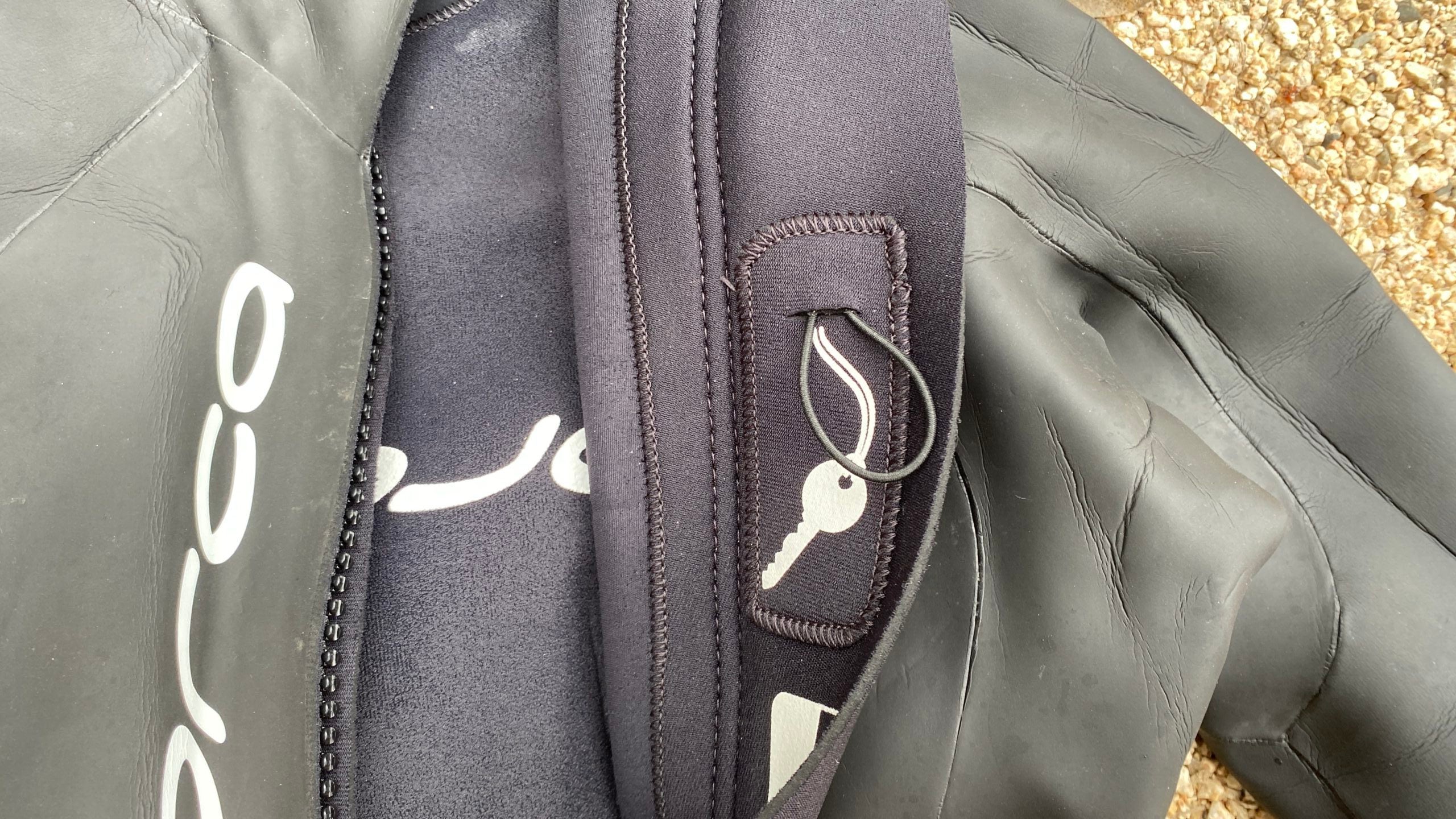
NFC Medical ID Chip – This is the big one. And unless I’ve missed it, this is the first wetsuit I’ve ever seen that boasts this type of tech. We’ve seen it fairly often in newer cycling helmets, but never sewn into neoprene. Once set up with the super clunky Emerid website and an NFC-compatible smartphone, you’ll be able to store your personal info, medical info, and up to three contacts in the chip sewn into the suit. When anyone with an NFC compatible smartphone comes within 3cm of the chip, it’ll flash not only your info, your medical info, and as many contacts (up to three) that you provide, but it’ll also determine the smartphone’s location to help give direction for medical assistance. As cool as it is, it’s not without limitations—which we’ll get to below.

Orca Openwater RS1 SW Review: The Good
It goes without saying that the safety features on this suit are great—not just in theory (for some) but also in practice (for most). The hi-vis accents seem like a no brainer and essential for triathletes swimming in water with boaters or for help being spotted by lifeguards at a distance (and not being mistaken for a buoy). The key pocket is similarly perfect, and the buoy loop works super well for the Restube setup and ok for a regular pre-inflated safety buoy. Embarrassingly enough for me, I find that the number-one reason I don’t wear an emergency self-inflating buoy like the Restube or a pre-inflated one is because I’m too lazy to strap it on each time. The loop helps with this “hurdle.”
Interestingly, the NFC chip system is one of the things that makes you feel comfortable and is a super good idea—especially if it gets adopted by more brands—but in practice, it’s not as useful as you’d think. That said, the information it gives is great. It comes up quickly on a web browser when you hold a compatible smartphone close enough to the waterproof chip, and it lets you read personal info, provided medical info, contacts, and location. If nothing else, the NFC acts as a great way to help a lost wetsuit find its way home.
Elsewhere the suit is an excellent midrange race or training suit with durable, moderately flexible neoprene that provides a standard level of warmth, floatation, and range of motion with great anti-chafe construction in the neck and a new style of super super sticky velcro closure that you often find on more higher-end wetsuits.
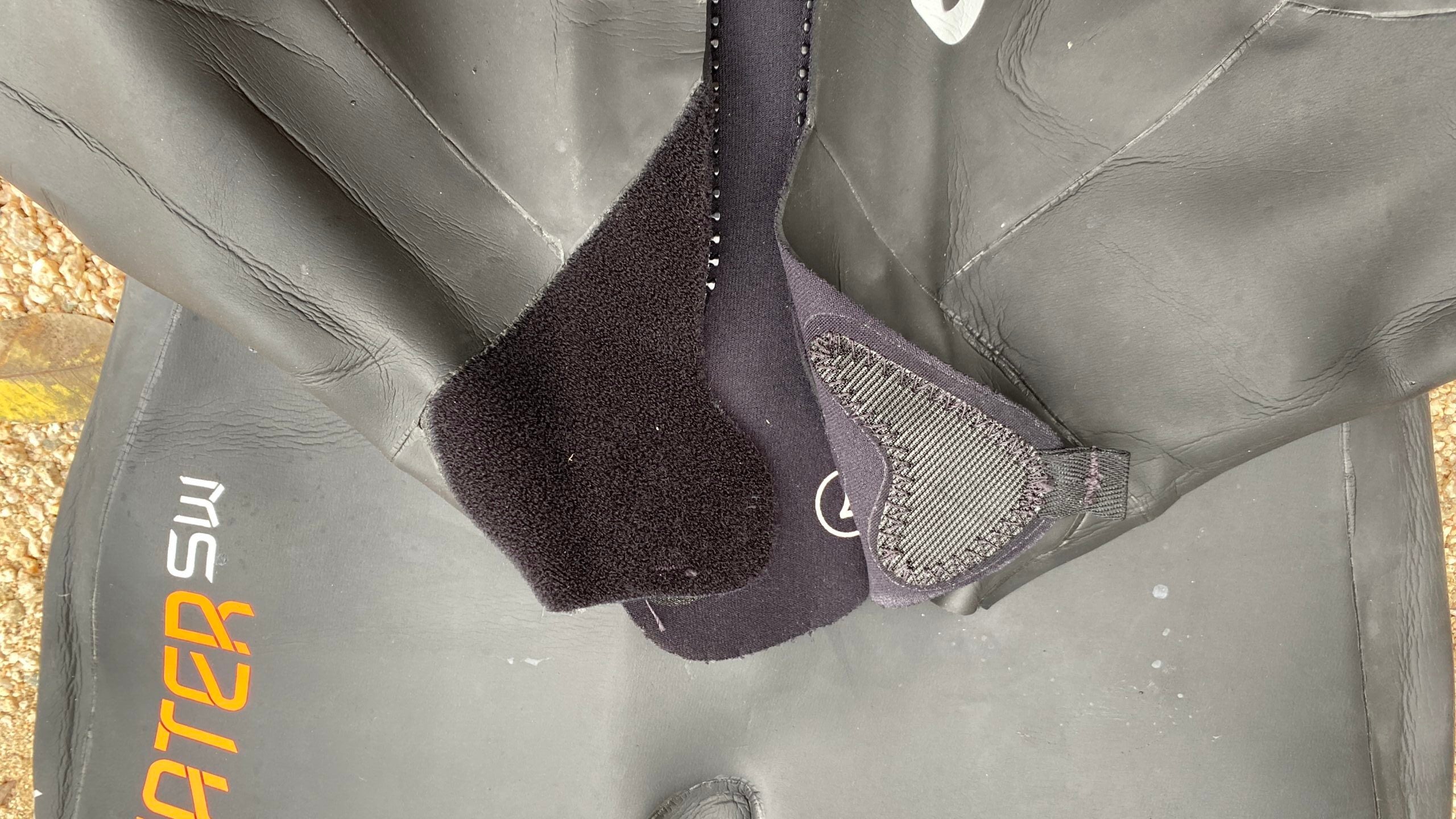
While there’s nothing exceptionally notable about the performance of the suit while swimming, it’s still a very solid suit with absolutely no issues, and it comes off as well—if not better—than most all tri wetsuits we’ve ever tried.
That said, safety is absolutely what would drive the purchase of this suit, as no other brand has a collection of attractive and novel safety features like the RS1.
Section dividerOrca Openwater RS1 SW Review: The Ok
As we said above, the neoprene and general construction on this suit is about on par for a $300-350 wetsuit. There are only a few panels bonded together, so you won’t get a crazy great fit if you’re not the right body type (we found the fit to work well for mid-sized to bigger-legged people per size—super skinny triathletes may want to size down). Flexibility-wise it’s the same story: good not great.
The only other big pause with the RS1 is in the actual use and adoption of the big safety selling point—the NFC chip. First, the website to create an account and set up the information is not amazing. It feels unfinished and clunky. While that’s not a huge issue, as you likely won’t use it more than once, it’s worth noting. That said, when you need to view the information (knowing that this would likely be a stranger helping you), it works just fine.
But this leads to the bigger point: Would a stranger or even a first responder know to look for an NFC chip on a wetsuit if you were found unconscious? As the technology is incredibly new, it’s unlikely that someone would think to put their smartphone up against the tiny chip on the wrist in an emergency situation. Furthermore, we spoke to lifeguards at a major city department (who did not want to be identified given they were not authorized to speak for their department), and they said two things: First, they would be so busy with treating the injury or providing aid that they would be unlikely to use the chip even if they knew it was there, and second, none of them knew the tech even existed.
One could go further and wonder if in an emergency situation that a wetsuit would be the first thing to get cut off and discarded, so even if a first responder—like an EMT who has seen the tech in an NFC helmet—would ever see the suit in an ambulance or hospital setting. And as you can see in the picture below, the NFC chip area is not super identifiable nor is it explained clearly on the suit to anyone who would see it on an unresponsive swimmer.
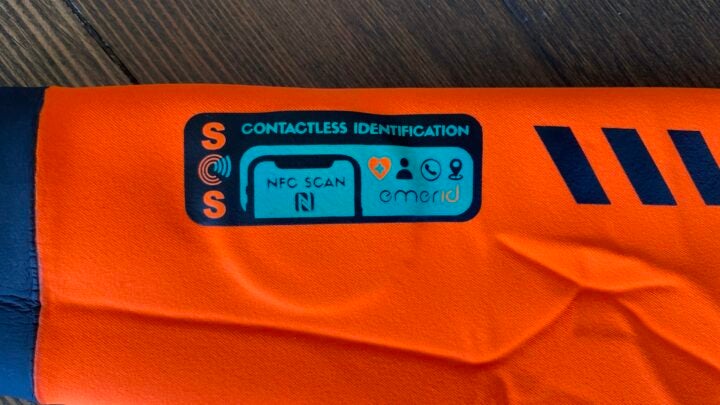
Orca Openwater RS1 SW: Conclusions
Even though the NFC identification isn’t perfect, it’s a great start. If more wetsuit brands put this into their suits and spent the time to educate first responders, this tech could literally save lives and help connect families with victims much faster. If Orca (or another brand) did a better job of calling attention to and explaining the NFC chip on the suit (think something simple like: “IF FOUND UNRESPONSIVE, PLEASE HOLD PHONE TO THIS SPOT FOR INFO”), we could also be in business. Yes, it’s a little morbid and not what you want to see before you head out into the waves on your training swim, but if you want help in an emergency situation, sometimes subtlety is the enemy of action.
So yes, the safety features on this suit help outweigh the “just ok” qualities in the neoprene and construction—even if you discount the effectiveness of the NFC chip right now. In other words, this is an absolutely awesome training suit—for those who have concerns about safety in the open water. Is this the fastest racing suit you can buy? Not at all. Does the NFC concept need some work and more widespread adoption/education before it actually saves lives? Absolutely. But by making safety a priority in the RS1, my hope is that other brands take note, and that those who are worried about the dangers of the open water would invest in this suit and find some peace of mind.
RELATED: What Matters (And What Doesn’t) When Buying a Wetsuit
